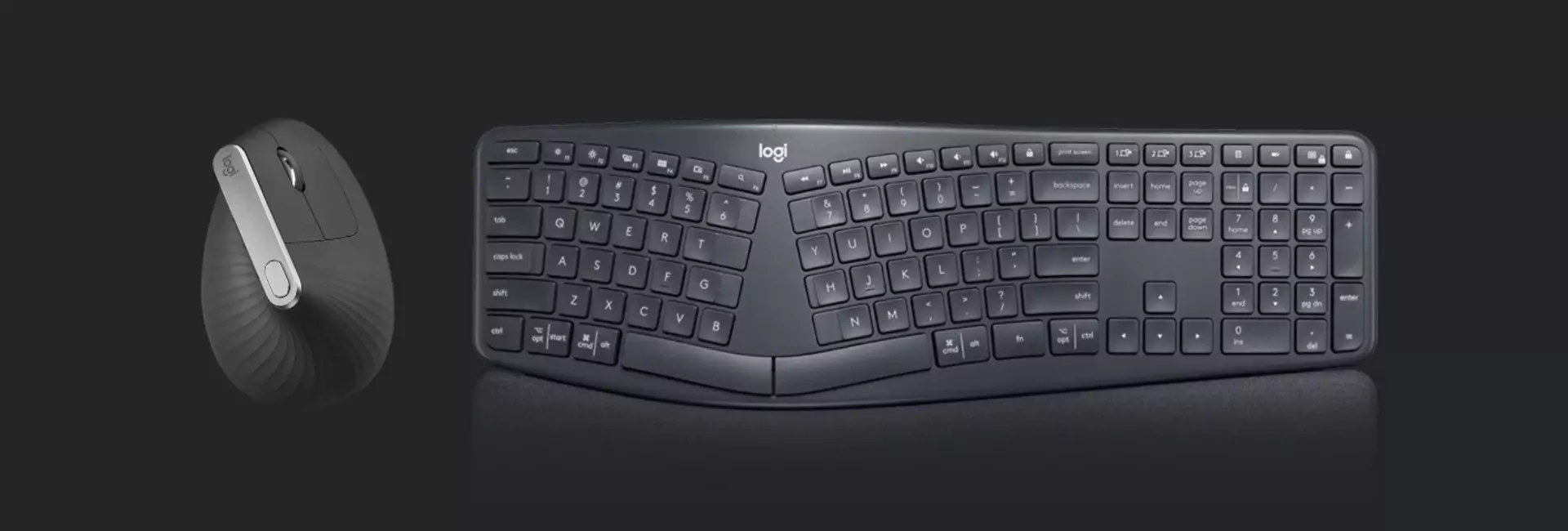
Product categories
- Components 0
- Consumer Electronic Accessories 0
- Cable 0
- Charger 0
- Docking Station 0
- Power bank 0
- Monitors 0
- Peripheral 0
- Storage 1
- DRAM 0
- Flash Memory 0
- HDD 0
- Memory Card 0
- SSD 0
Keyboards
Keyboards have evolved significantly, and today there are various types that cater to different needs, preferences, and use cases. Here's an overview of the different types of keyboards:
- Mechanical Keyboards
Mechanical keyboards are known for their tactile feedback and durability. They use individual mechanical switches beneath each key, providing a distinctive "click" or "bump" when a key is pressed. These keyboards are popular among gamers, programmers, and people who type frequently because of their responsiveness and customizability.
- Membrane Keyboards
Membrane keyboards are the most common type of keyboard found on laptops and budget desktops. They use a rubber dome or membrane layer beneath each key to register key presses. When a key is pressed, the membrane collapses and makes contact with the underlying circuit board.
- Razer Keyboards (and other brands' specialized models)
Razer is a company well-known for its gaming peripherals, and its keyboards are designed with gamers in mind. These keyboards often feature mechanical switches, customizable RGB lighting, and dedicated macro keys. Other brands like Corsair, Logitech, and SteelSeries also make gaming keyboards with similar features.
- Ergonomic Keyboards
Ergonomic keyboards are designed to reduce strain on the hands, wrists, and arms. They often feature split layouts, curved key arrangements, or negative tilt to promote a more natural hand position while typing. These keyboards are ideal for individuals who spend long hours typing and want to avoid repetitive strain injuries (RSI) like carpal tunnel syndrome.
- Laptop Keyboards
Laptop keyboards are compact and integrated directly into the laptop. They generally use membrane switches but have a low profile. Some high-end laptops feature mechanical-like switches, but most are designed to be thin and light to match the laptop's overall slim design.
- Wireless Keyboards
Wireless keyboards connect to devices through Bluetooth or radio-frequency (RF) technology, eliminating the need for cables. These are popular for home offices or entertainment setups, where the user may prefer to sit further from the screen.
- Virtual Keyboards
Virtual keyboards do not use physical keys. Instead, they appear on a screen, allowing users to "type" by tapping on an on-screen keyboard. These are commonly found on smartphones and tablets.
- Chiclet Keyboards
Chiclet keyboards (also known as island-style keyboards) feature flat, rectangular keys with rounded corners that are spaced apart. These are commonly used in laptops and modern desktop keyboards.
- Flexible and Roll-Up Keyboards
Flexible keyboards are made of silicone or other soft materials, allowing them to be rolled up or bent. These are often used for portability or in environments where space is limited, like in a lab or for field work.
- Compact and 60% Keyboards
Compact or 60% keyboards are smaller layouts that remove the number pad, function row, and arrow keys, resulting in a smaller, more portable design. These are often used by minimalists or gamers who prefer portability.
Keyboards
Keyboards have evolved significantly, and today there are various types that cater to different needs, preferences, and use cases. Here's an overview of the different types of keyboards:
- Mechanical Keyboards
Mechanical keyboards are known for their tactile feedback and durability. They use individual mechanical switches beneath each key, providing a distinctive "click" or "bump" when a key is pressed. These keyboards are popular among gamers, programmers, and people who type frequently because of their responsiveness and customizability.
- Membrane Keyboards
Membrane keyboards are the most common type of keyboard found on laptops and budget desktops. They use a rubber dome or membrane layer beneath each key to register key presses. When a key is pressed, the membrane collapses and makes contact with the underlying circuit board.
- Razer Keyboards (and other brands' specialized models)
Razer is a company well-known for its gaming peripherals, and its keyboards are designed with gamers in mind. These keyboards often feature mechanical switches, customizable RGB lighting, and dedicated macro keys. Other brands like Corsair, Logitech, and SteelSeries also make gaming keyboards with similar features.
- Ergonomic Keyboards
Ergonomic keyboards are designed to reduce strain on the hands, wrists, and arms. They often feature split layouts, curved key arrangements, or negative tilt to promote a more natural hand position while typing. These keyboards are ideal for individuals who spend long hours typing and want to avoid repetitive strain injuries (RSI) like carpal tunnel syndrome.
- Laptop Keyboards
Laptop keyboards are compact and integrated directly into the laptop. They generally use membrane switches but have a low profile. Some high-end laptops feature mechanical-like switches, but most are designed to be thin and light to match the laptop's overall slim design.
- Wireless Keyboards
Wireless keyboards connect to devices through Bluetooth or radio-frequency (RF) technology, eliminating the need for cables. These are popular for home offices or entertainment setups, where the user may prefer to sit further from the screen.
- Virtual Keyboards
Virtual keyboards do not use physical keys. Instead, they appear on a screen, allowing users to "type" by tapping on an on-screen keyboard. These are commonly found on smartphones and tablets.
- Chiclet Keyboards
Chiclet keyboards (also known as island-style keyboards) feature flat, rectangular keys with rounded corners that are spaced apart. These are commonly used in laptops and modern desktop keyboards.
- Flexible and Roll-Up Keyboards
Flexible keyboards are made of silicone or other soft materials, allowing them to be rolled up or bent. These are often used for portability or in environments where space is limited, like in a lab or for field work.
- Compact and 60% Keyboards
Compact or 60% keyboards are smaller layouts that remove the number pad, function row, and arrow keys, resulting in a smaller, more portable design. These are often used by minimalists or gamers who prefer portability.

